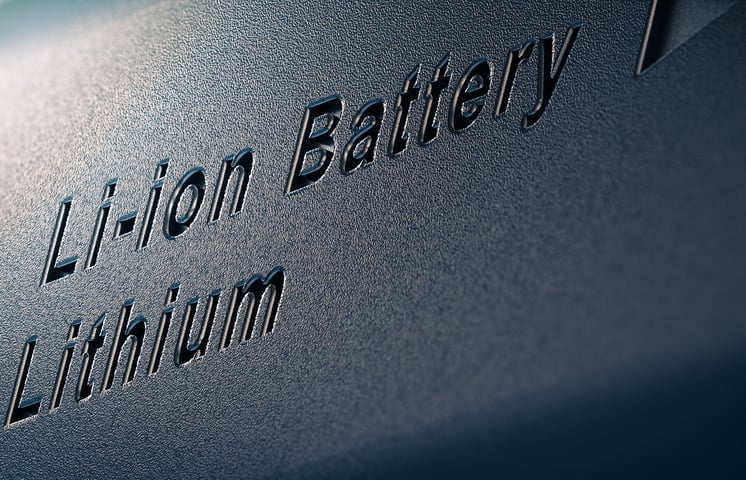
What are the benefits of Li-ion batteries? And what makes them so special that the inventors even were awarded the Nobel prize in chemistry? Wanting to learn more about this best-in-class battery, we talked to an expert in the area, Prof. Erik Berg at Uppsala University in Sweden
The first application for Li-ion batteries was for portal electronics. Sony, in Japan, were the ones that that took the battery to market, Prof. Berg explains. Sony was looking for a battery technology to power their Walkman’s - a portable audio player that you could put in your pocket and bring with you, for example as you go for a walk. The batteries available at the time were heavy, and many of them were not rechargeable. The newly invented Li-ion battery turned out to be a game-changer. Now there was a battery that was sufficiently lightweight to be used in portable devices. Another key benefit of the Li-ion battery was its lifetime. It can be charged and discharged many, many times. Today, most of us charge our cell phones, powered by Li-ion batteries, every evening and we can keep doing this for years. This is extraordinary for a battery. There is no other system that comes even close to that, Prof. Berg says. Lifetime and energy density, this is where the li-ion batteries are superior.
Due to the energy crisis in the 70s, time and money were invested into the area of battery research to develop better and more useful batteries, Prof. Berg says. Batteries are chemical devices, so the periodic table was a good place to start looking for what material that would be optimal and improve battery characteristics. The outcome of this scouting process was lithium – the lightest metal of all metals in the periodic table. The goal was to be able to squeeze in as much energy as possible in a battery of small volume and of low weight, and the hypothesis was that a lithium-based battery could be made extremely light weight or have a very high energy density. There were lots of discussion on how this could be achieved, and the hot topic of the scientific conferences in the 70s was really how to make lithium-ion based batteries. This is how it all started, the research on Li-ion batteries, Prof. Berg concludes.
Every battery has a shuttle, or a working ion, that moves from one side of the battery to the other, Prof. Berg explains. The early batteries had copper and zinc electrodes, and an electrolyte based on sulphate in between. In such a battery, sulphate molecules go back and forth between the two electrodes. In Li-ion batteries, Li-ions are doing all the work, they are the ones going back and forth. This is where the battery gets its name, he says. There could be many different versions of Li-ion batteries, however, i.e., the chemistry could vary. The only requirement for a battery to qualify as a Li-ion battery is that both the electrodes in the cell are reactive with Li-ions. During charge and discharge, the Li-ions go back and forth between the electrodes and react either with the transition metal oxide or with the graphite, Prof. Berg explains. This is the essence of the cell; this is where we get the energy. The oxidant and reductant are reacting with the Li-ions that are passing from one electrode to the other during the charge and discharge. This chemical reaction, or rather the two coupled chemical reactions, one on the negative and one on the positive electrode, lead to formation of charge that flows through the outer circuit, for example, your car or your cell phone.
Also, there is a voltage difference between the electrode materials, Prof. Berg says. The graphite on the negative electrode gives a certain potential, and the oxide, classically, cobalt oxide is used as the positive electrode material, gives another potential. The difference in potential between those two electrode materials is the voltage over the cell. Charge times voltage equals electrical energy. When we develop batteries today, we focus on those two concepts, voltage, and charge, and we try to figure out ways to increase either of the two, Prof. Berg says.
Lately, it has been particularly fun to give the lectures on batteries because I can bring up a discussion on the Nobel prize and explain why the winners got the prize for developing the Li-ion battery, Prof. Berg says. In brief, Stanley Whittingham was the one who presented the first outline of the cell, a working Li-based cell. He was the one who made the first prototype. Then John B. Goodenough came up with the cobalt oxide to be used as the positive electrode. This is the material that could react reversibly with Li-ions. And then, Akira Yoshino came up with the negative electrode, the carbon. When you put this together, you have the first, commercial Li-ion cell, the cell that was then produced by Sony, Prof. Berg says.
Listen to the full interview with Prof. Berg to learn more about batteries in general and the Li-ion battery in particular.
Learn more about Quartz Crystal Microbalance with Dissipation monitoring technology, QCM-D, from a user perspective.
The range of technologies that could be used in a biointerfaces lab is vast. We talked to Dr. Jenny Malmstrom, University of Auckland to learn more.
Light interaction with matter is an important part of our everyday lives. We talked to Prof. Magnus Jonsson at Linköping University, to learn more.
Learn about the difference between primary and secondary batteries, and about battery performance indicators.
This is what we learned about the fascinating area of nanomedicines when we talked to Dr. Gustav Emilsson, who is working with nanomedicine development
Read about the different components in cleaning products and how they work on a molecular level.
Learn more about how Lipid Envelope Antiviral Disruption (LEAD) maybe could be used in the future to address infectious disease such as Zika, Dengue and Hepatitis C.
